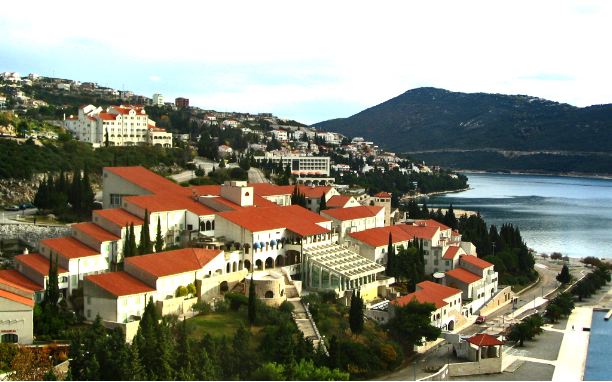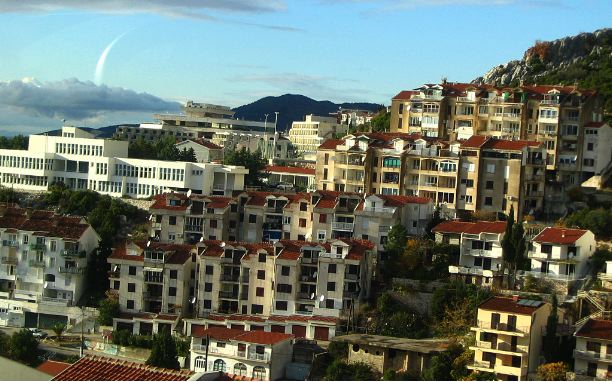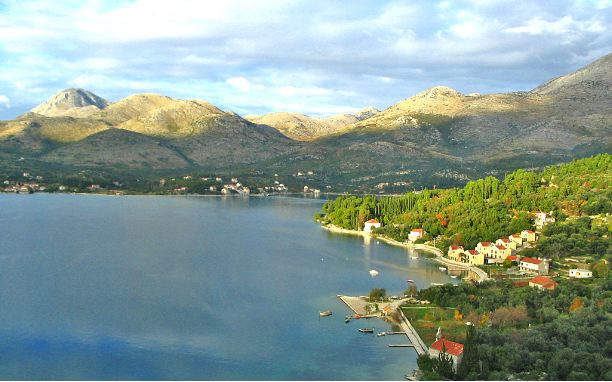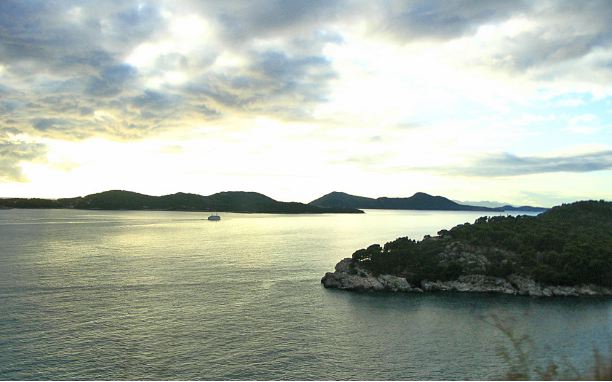To go Back at any time,
use Browser's "Previous Page"
The Republic of Bosnia and Herzegovina also gained its independence during the Yugoslav wars of the 1990’s. It has a population of around four million made up of Serbs, Croats and Bosniaks. These three ethnic groups have strong differences in culture and religion. Typically, Serbs are Christian Orthodox, Croats Roman Catholic and Bosniaks Muslim.
The Republic’s name is taken from two provinces that have existed side by side for about 300 years: Bosnia which makes up 80% of the republic’s area and Herzegovina, the southern tip of the country, which accounts for the other 20%. The name of the country is commonly shortened to “Bosnia”.
The country of Bosnia is landlocked, except for a peculiar 15 mile stretch of Adriatic coastline centered around the town of Neum. The origins of this corridor go back hundreds of years to the time of the Dubrovnik Republic and the Ottoman Empire. Dubrovnik gifted the town of Neum to the Ottomans because it did not want to have a land border with Venice, its powerful adversary. In exchange for an exit to the sea, the Turks protected Dubrovnik against Venice with a corridor, which is now known as Neum and still separates Dubrovnik from the rest of Croatia.
Due to this corridor, everyone on our tour entered Bosnia at least once. It can’t be helped as you drive south on the main highway from Split to Dubrovnik. Our second entry into Bosnia happened on Thanksgiving Day because we and three others on our tour arranged a special visit to Medugorje. Hiring a driver, it took about 2.5 hours of travel in his van from Dubrovnik. Our arrival was timed to get us to the 10 am Mass (in English). As we walked to the church, it was surprising how quiet it was; hardly anyone was about:
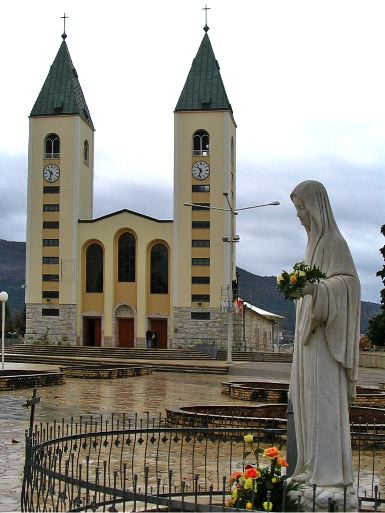
Entering the church, it was quickly obvious there wasn’t going to be a 10 am Mass in any language. Only a few people were in the church, including several painters doing touchup work. We checked all the signs in the vestibule and saw no 10 am Mass listed anywhere, nor at any hour soon thereafter. As this was to be our only chance for any kind of service, it was a major disappointment. We attributed it to the “Winter Schedule” and figured our guide had “Summer Schedule” in mind.
Without a Mass, we had an abundance of quiet time in church. St. James, operated by the Franciscan Order, opened in 1969. Even today, after many improvements, its interior is not highly embellished but on the plain side:
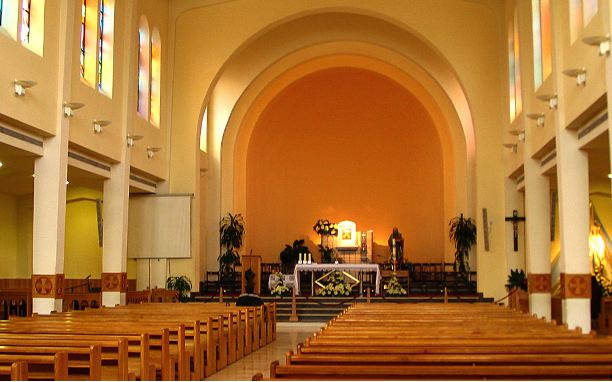
On the right, near the front of the church, is an attractively decorated statue of Mary with St. Francis and the Child Jesus nearby:
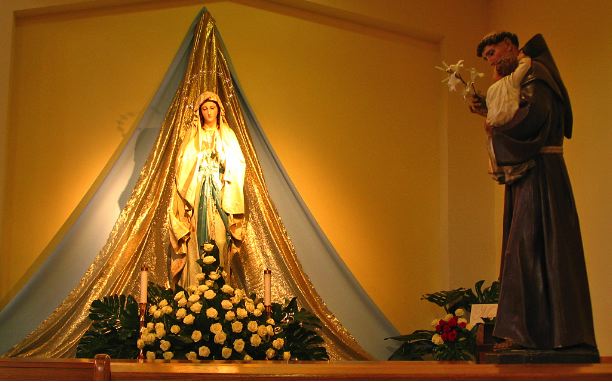
Finally, leaving the church, we wandered the nearby grounds. (That’s when we discovered the 10 am Mass in the Chapel, just getting over as we entered. In retrospect, we should have tried our English on the painters.) The canopied structure on the right (below) is used for major outdoor celebrations:
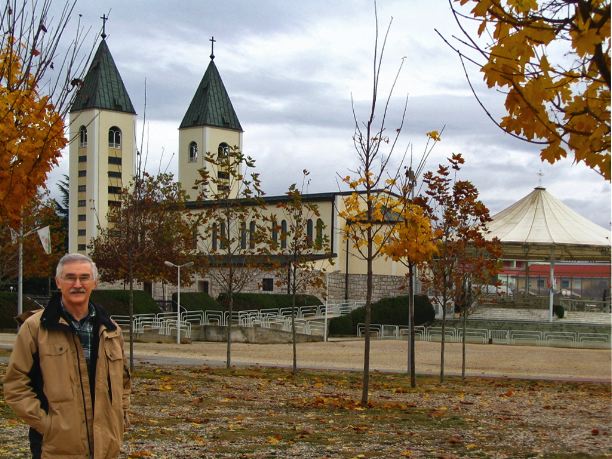
For those not familiar with the story of Medugorje, here is a short synopsis:
On June 24, 1981, Medugorje was a farming community of some 400 Croatian families in the Herzegovina region of Yugoslavia, an area that is rugged, rocky and mountainous. On that June day, a sequence of events began to unfold that was destined to change the town and the surrounding countryside dramatically and have a worldwide effect.
On Podbrdo Hill, four girls and two boys saw a young woman they described as exceptionally beautiful, joyously radiant and smiling. She beckoned them to come closer but, surprised and afraid, they ran away. Despite widespread disbelief in their story, within two days 3000 people from surrounding areas flocked to the hillside with the children. When the six youngsters began to pray at the site, all in attendance witnessed brilliant flashes of light as the woman reappeared to the youngsters. When asked “What is your name?”, the apparition replied, “I am the Blessed Virgin Mary.” She stated: “I have come to tell the world that God exists. He is fullness of life, and to enjoy the fullness and obtain peace, you must return to God.”
From that day to this, she has been appearing daily. She has given thousands of messages - for the youngsters, for the parish, for the region and for the world. Presenting herself as a servant messenger from God, the messages she brings do not convey any new teachings, but echo the Gospels and teachings of the Church. These messages quickly began to appear around the world in many languages reaching many millions of people.
Except for the beautiful grounds around the church, the village of Medugorje is a hodgepodge of shops and old homes intermixed with some new ones, none of them extravagant. There is no obvious master plan for development. As you might expect, religious articles are sold at a myriad of stores near the church. If the village has become wealthy because of all the visiting pilgrims and tourists, it certainly does not show. Here are a few typical shots taken from the van as we drove around Medugorje:
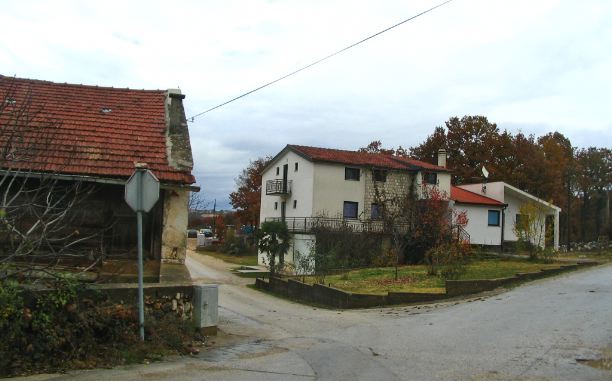
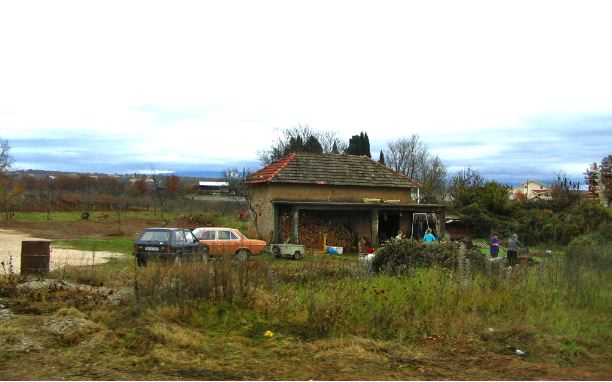
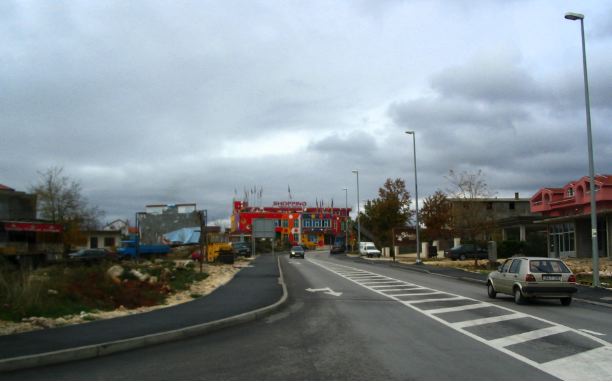
We also had a close look at Podbrdo Hill where the apparitions initially took place. Rocky and steep, it is a long, long ascent to the top.
Under the best of circumstances, spending only a few hours at a shrine like Medugorje is hardly the best way to absorb its message and meaning. However, it was all we could accomplish with our tour’s schedule. If we hadn’t made the effort at all, we would undoubtedly have always wondered what we missed. As for our own personal opinion, it doesn’t really matter: no one has to accept these visions as authentic and some would be hard pressed to do so. However, for any Christian who believes in an almighty, all-loving God and Savior who came to earth through Mary, it should not be difficult to accept that He might occasionally empower His own mother to appear on earth.
Taking our leave of Medugorje, at least we had dry and clear conditions for snapping photos from our van. Here are coastal scenes we passed on our return to Dubrovnik:
